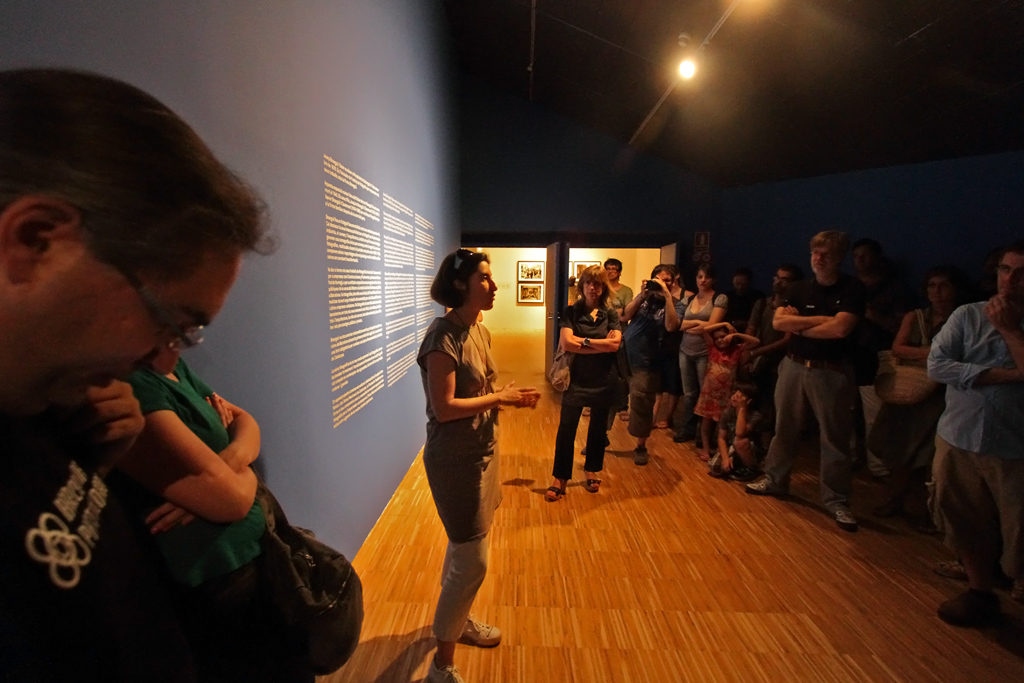Lucia Calvo
Treballo a l'equip web del Centre de Cultura Contemporània. Sóc periodista, escric notícies, faig vídeos i diàriament sóc darrere d'algunes de les identitats virtuals del CCCB a Internet. També treballo amb projectes web participatius del Centre, com aquest blog! Em trobareu al mig de moltes converses, una de les meves preferides, la de Twitter (@losilux)
«The last decade has been an intellectual fiasco», Panjak Mishra, writer
November 8th, 2011 Lucia Calvo 1 CommentInterview: Jonas Mekas, man of film
November 2nd, 2011 Lucia Calvo No CommentsJonas Mekas, one of the key figures in experimental film, visits the CCCB to meet in person a virtual friend, a friend he has known through the Internet: José Luis Guerín. The two filmmakers have exchanged filmed correspondence in recent months, small pieces of video about everyday life. Their correspondence, as well as the correspondence of another five pairs of contemporary creators, can be seen at the CCCB at the exhibition: “The Complete Letters. Filmed Correspondences.”
We talk with Mekas about how he sees the world through his cameras and about how he understands film and the art of capturing images in motion. He explains to us that he can only film what he has before him: New York, Brooklyn, his son, his friends. He talks about the Occupy Wall Street movement and the citizens’ protests in New York in which he has actively participated.
He reflects on film, an art which, according to him, is very much alive everywhere thanks to new technologies. We are surprised by the simplicity and lack of orthodoxy of his words.
This interview is an advance of a longer conversation that will be viewable on different CCCB channels: on the “Soy Cámara” programme, which will devote a special episode to him, in the XCÈNTRIC ARCHIVE, where we will be able to see an introduction by the filmmaker to all his works acquired by the CCCB, and the virtual platform “Global Screen”, where Mekas will reflect on the end of cinema and the future of screens.
Interview by Lucia Calvo and Gloria Vilches. Camera and lighting by José Antonio Soria and Juan Carlos Rodríguez
“The system tends to exclude people”, Saskia Sassen
January 19th, 2011 Lucia Calvo 1 CommentThe CCCB’s cycle of debates, “Crisis”, yesterday included a talk by the Professor of Sociology at Columbia University (New York) and globalization expert Saskia Sassen. Sassen gave a talk with the title of her latest book published in Spanish by Katz, Territorio, autoridad y derechos.
In the late 1980s, Sassen spoke of “global cities” as strategic nucleuses for international finance. Thirty years on, she sees the global city as something more than a space for the strategic concentration of power. It has also become a border space for imposing globalized, standardized culture on national or local economies.

Sassen points to a major shift in the logic of the global market, from needing lots of consumer-workers to incentivizing the mass expulsion of people from specific territories. “There are too many people”, says Sassen, listing international cases of people rejected by the system: refugees, US prisoners, the African population displaced by the purchase of millions of hectares of territory in Africa by investors in the rich world, etc.
What can the excluded population do? Sassen thinks the global city can also be a space of confrontation, a meeting place for many of the displaced, who could be joined by cosmopolitanism. By way of example, Sassen cites the popular revolt in Tunisia, which, according to the sociologist, was made possible by cities.








 With over 2000 photos and the participation of more than 200 photographers, the
With over 2000 photos and the participation of more than 200 photographers, the 

